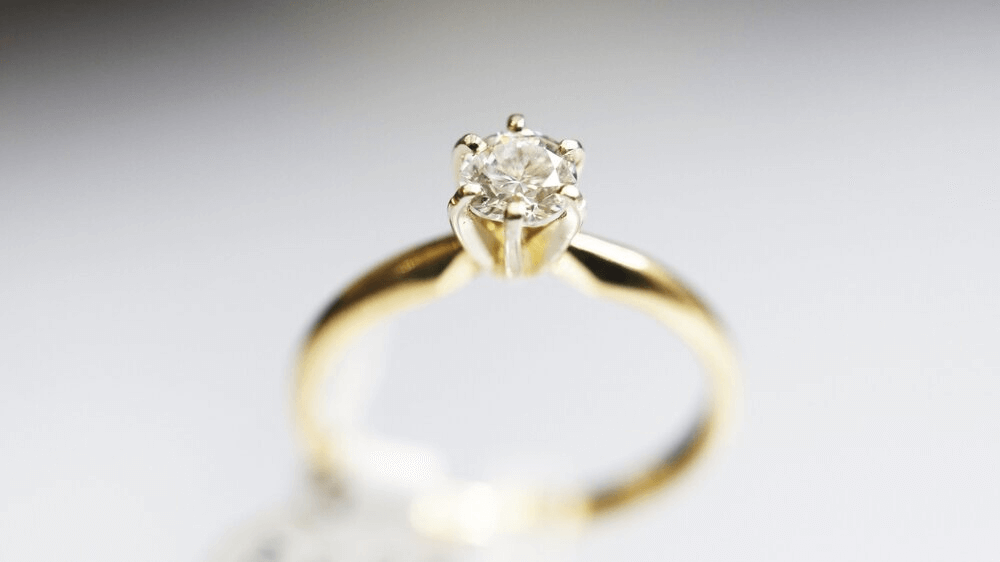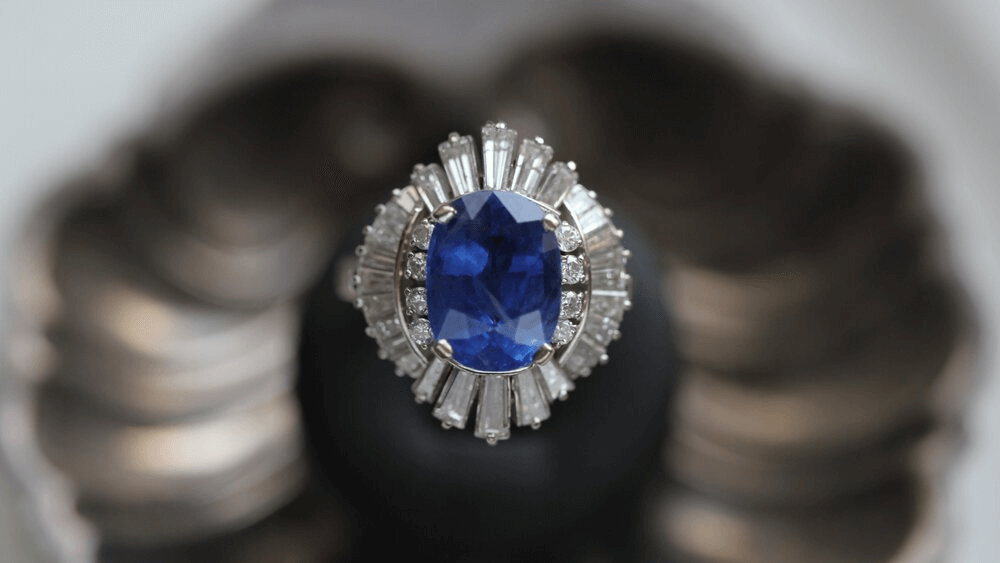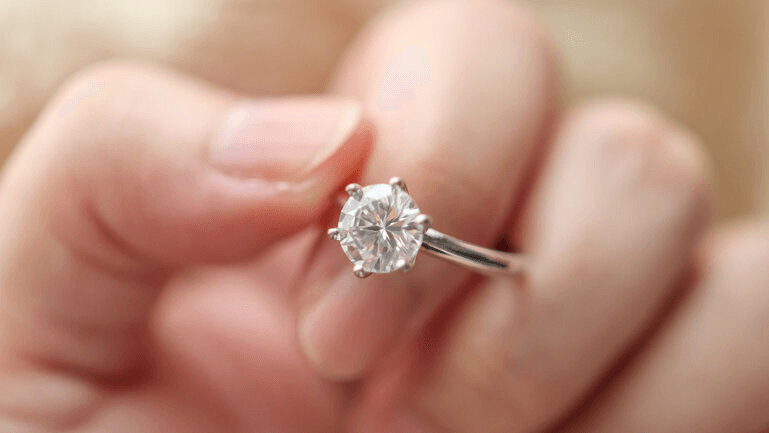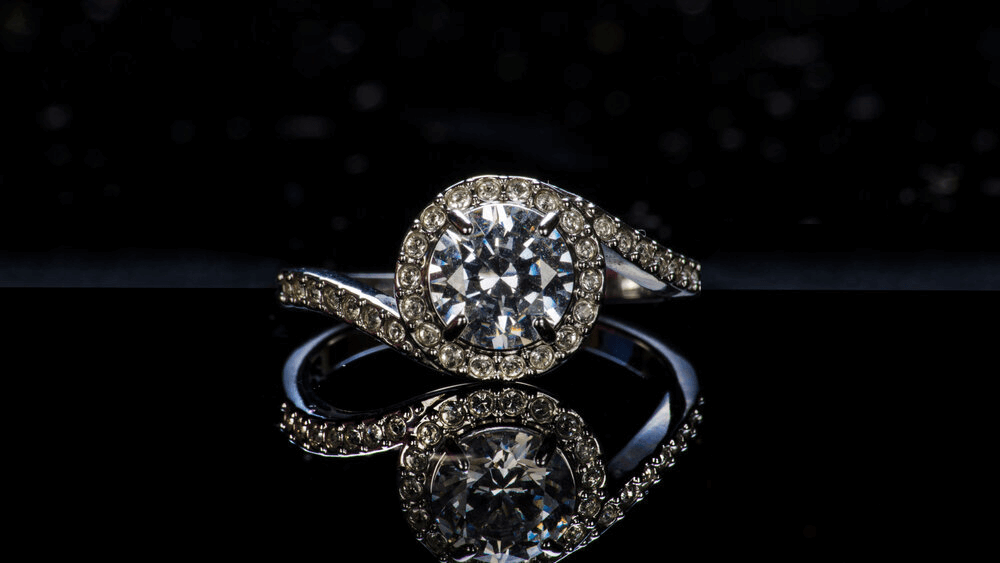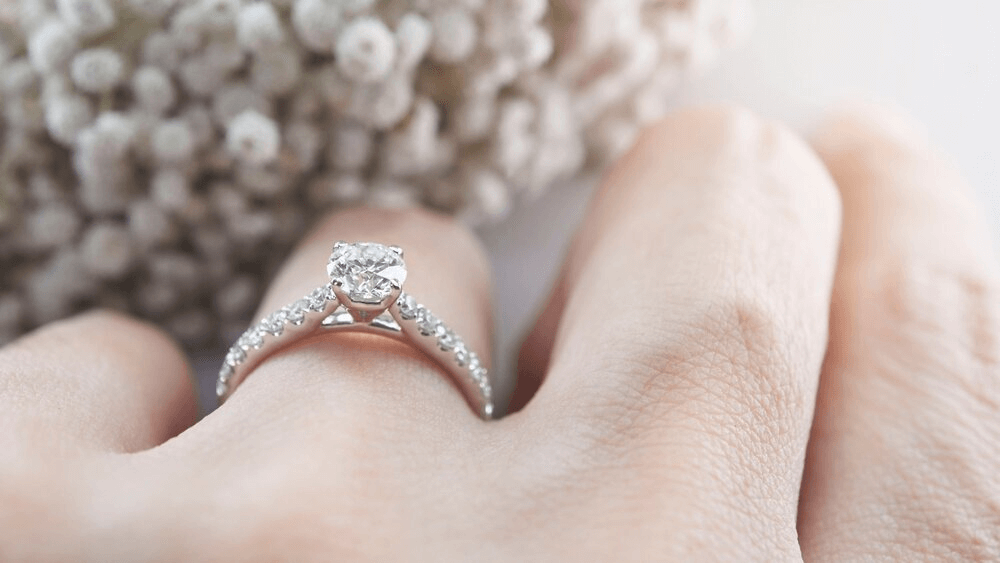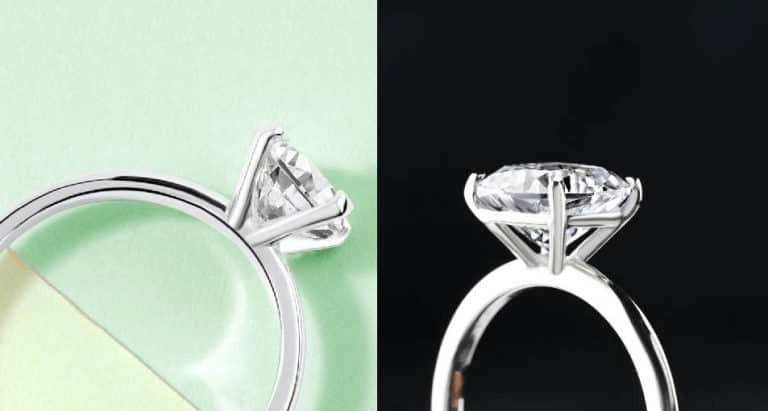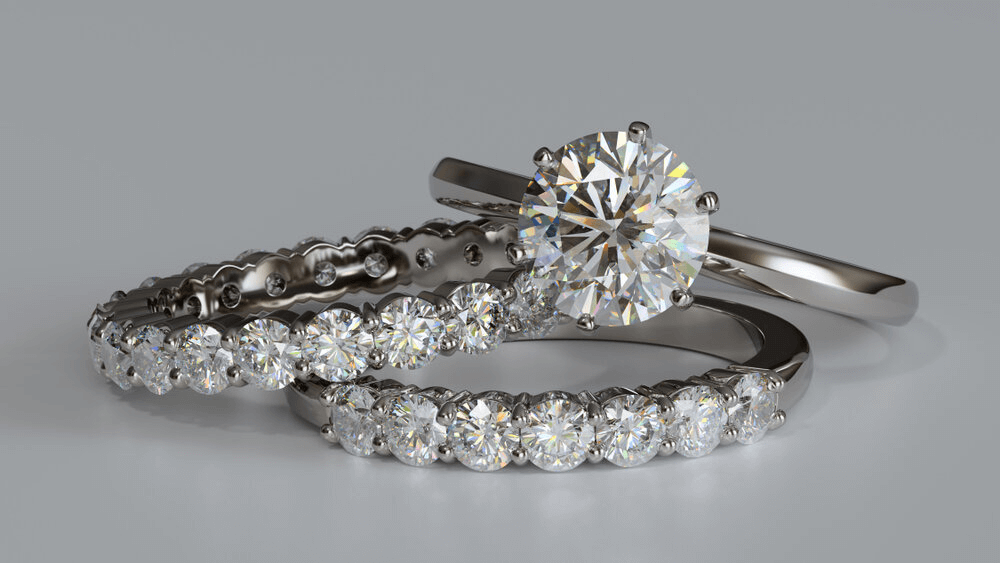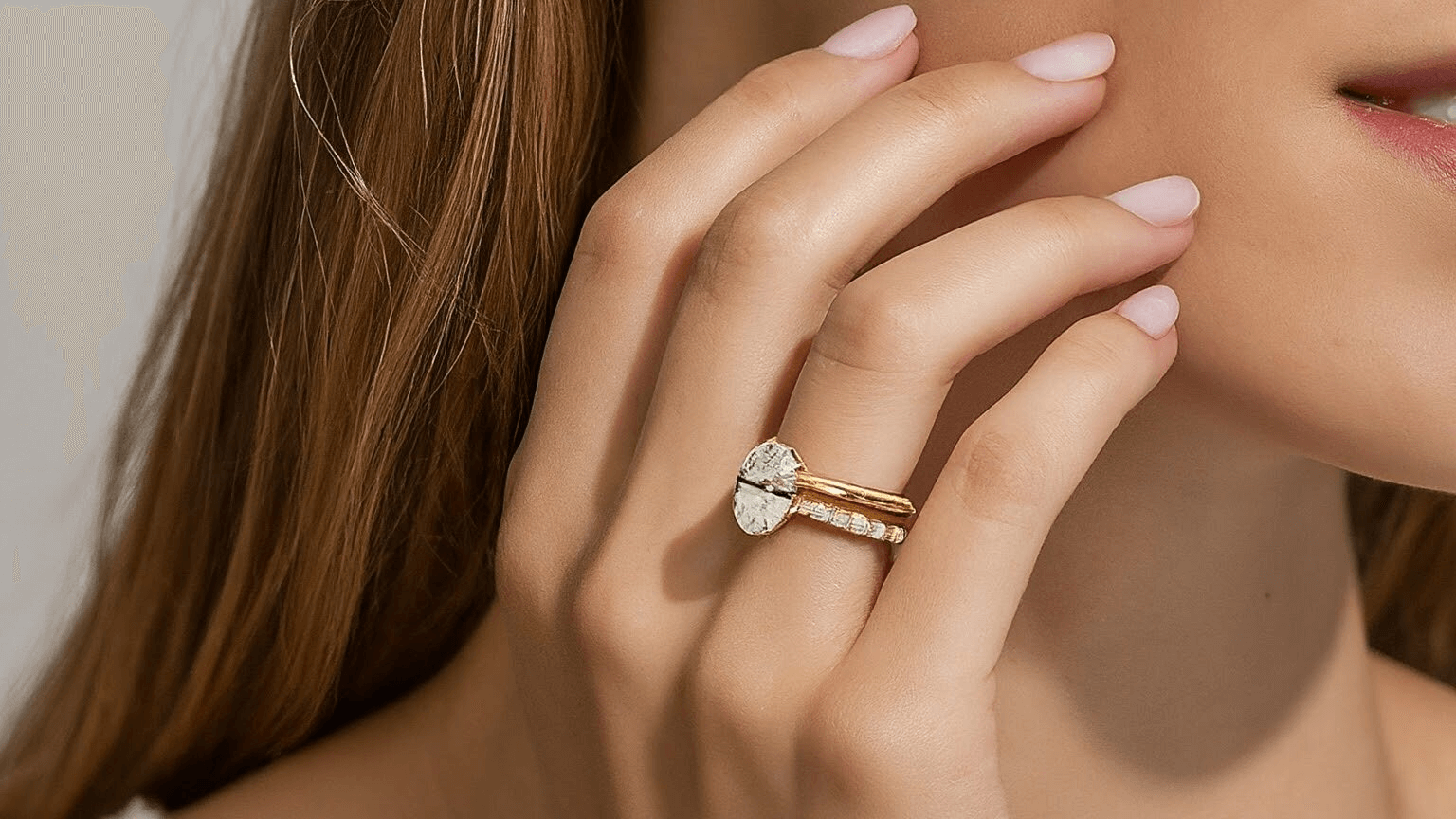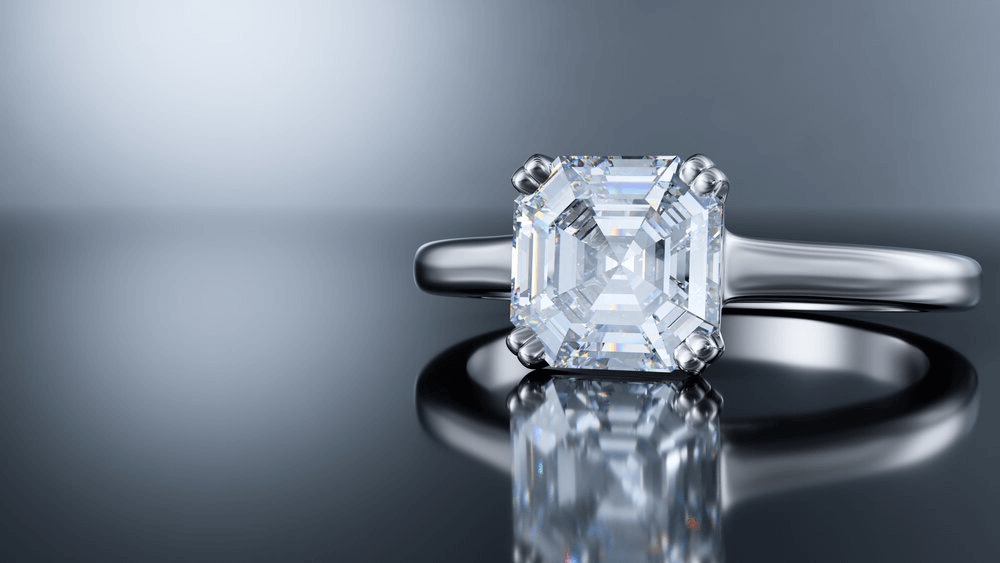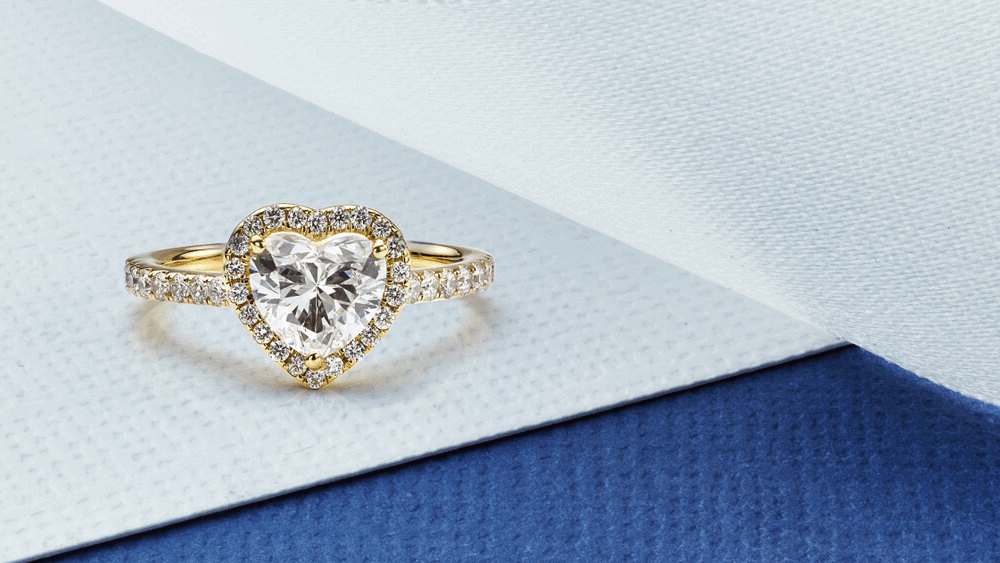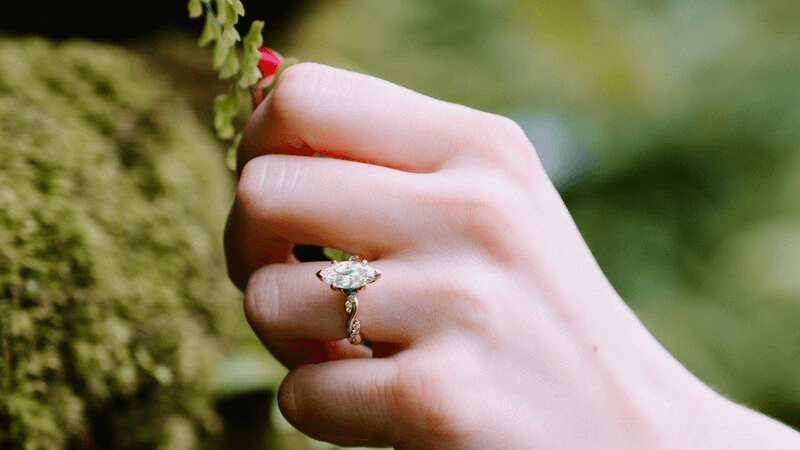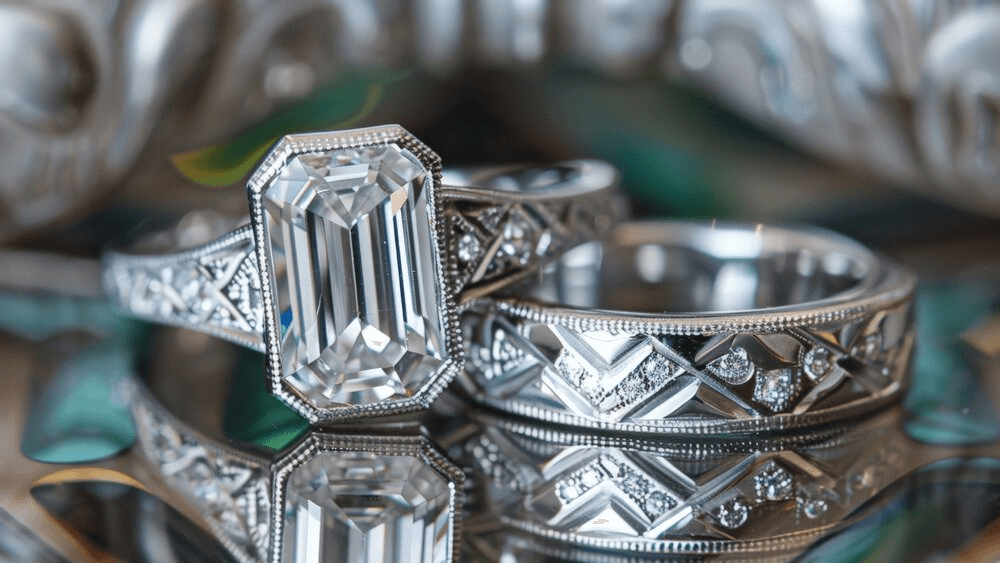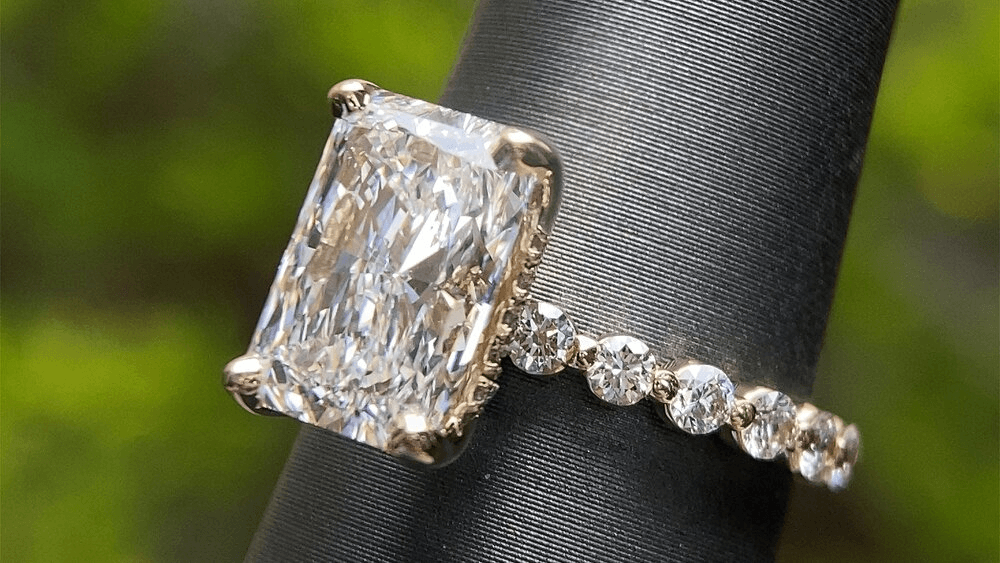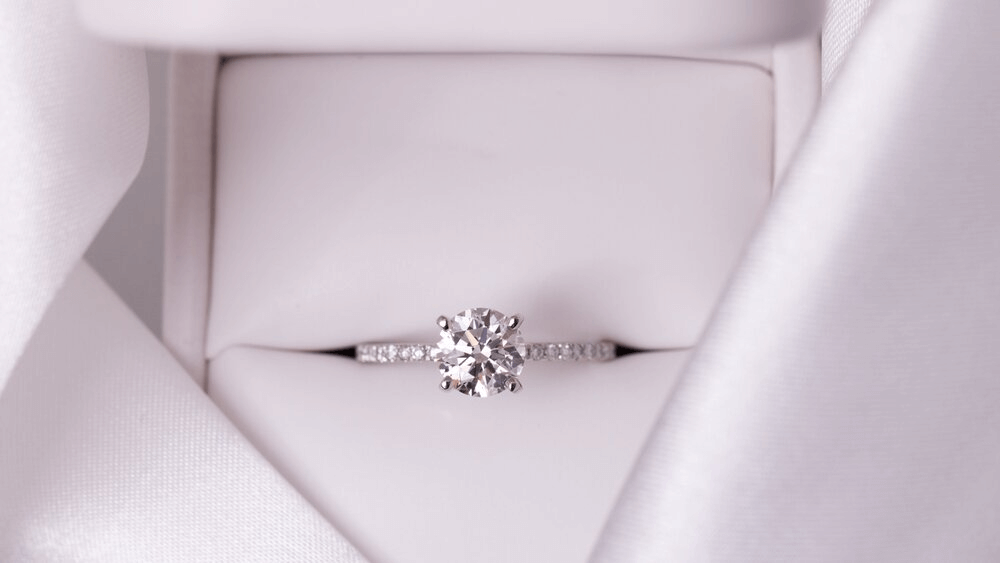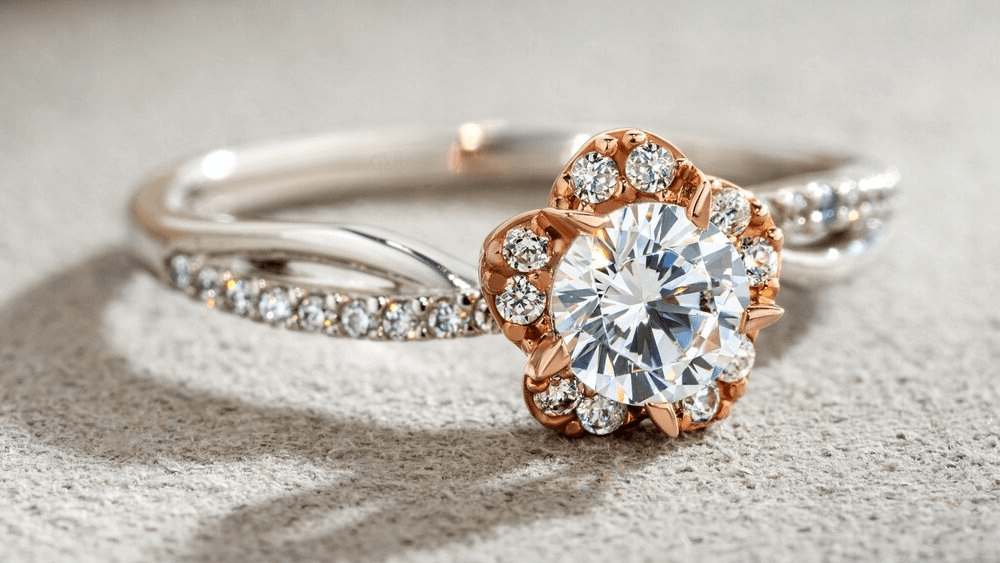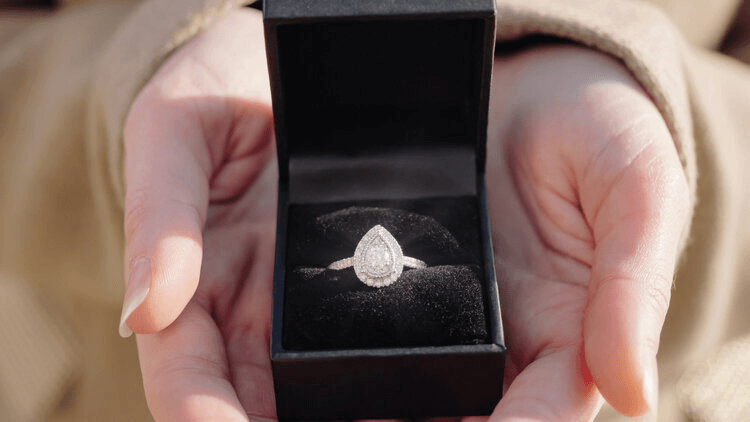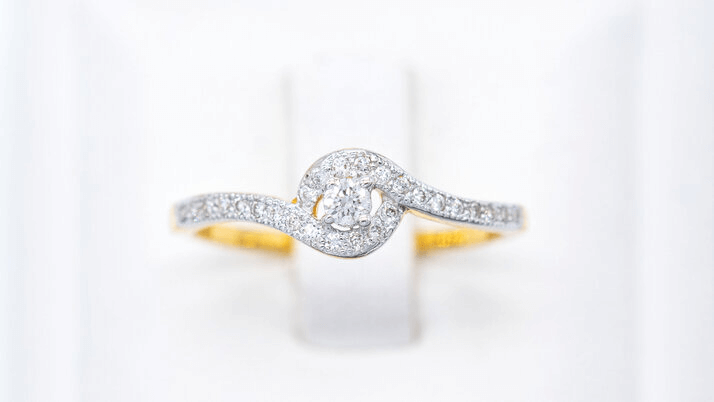Low-Setting Engagement Rings: Why Are They So Popular?

By Gary A.

Edited by Olivia H.
Published Mar 26, 2022
Edited on Dec 18, 2024
Balancing style with functionality, low-setting engagement rings provide a sleek, secure design that’s perfect for those seeking both beauty and durability in their daily wear.

- Low Setting Engagement Rings: 5 Quick Tips for Making the Right Choice
- Introduction
- What We Mean by ‘Low Setting’
- The Key Benefits of a Low Setting Engagement Ring
- Low Setting vs High Setting
- Impact on Diamond Appearance
- Our Expert Take
- 7 FAQs
Before we dive deeper into the specifics, here are some practical tips to help guide your decision-making process:
Low Setting Engagement Rings: 5 Quick Tips for Making the Right Choice
When it comes to selecting a diamond engagement ring, especially one with a low setting, there are several key factors to consider. These practical tips will guide you in making an informed decision that aligns with both your aesthetic preferences and lifestyle needs.
- Tip 1: Understanding the Profile and Fit:
Examine the Ring’s Profile:Low setting engagement rings sit closer to the finger, offering a sleek and understated look. It’s crucial to inspect how the ring looks from different angles, ensuring that the profile suits your taste and comfort.
Check the Fit: A low setting should feel comfortable and not catch on clothing or gloves. Try on the ring and simulate everyday activities to test its practicality in daily wear. - Tip 2: Assessing Diamond Security:
Bezel Settings: If considering a bezel setting, which encircles the diamond with metal, check that it’s evenly placed around the stone, offering maximum protection without compromising on style.
Evaluating Light Performance: While low settings can impact a diamond’s light performance, choosing the right cut can mitigate this. Look for diamonds with excellent or very good cut grades to ensure they still exhibit brilliance and fire.
Stone Shape Matters: Certain diamond shapes, like round or princess cut, may perform better in low settings compared to deeper cuts like marquise or pear. - Tip 3: Considering Long-term Wear and Tear:
Durability for Active Lifestyles: Low settings are ideal for those with active lifestyles, but it’s still important to consider the ring’s overall durability. Materials like platinum or high-quality gold can withstand daily wear better.
Maintenance Needs: Low setting rings may require less maintenance than high settings, but regular cleaning and check-ups are still essential to maintain their beauty and integrity. - Tip 4: Matching with Wedding Bands:
Complementary Designs: Think about how the engagement ring will pair with a wedding band. Low settings can offer more flexibility in band choices, allowing for a flush fit without gaps.
Try on Sets: If possible, try on potential wedding bands with the engagement ring to see how they sit together. This helps in visualizing the complete set and ensuring a harmonious look. - Tip 5: Aesthetic Appeal and Personal Style:
Personal Style Consideration: Your engagement ring should reflect your personal style. Low setting rings offer a modern and minimalist look, but ensure it resonates with your fashion sense and lifestyle.
Visual Impact: While low settings are more understated, they can still make a significant visual impact. Consider designs with unique features like intricate band designs or accent stones to enhance the ring’s appeal.
Now that you’ve got these practical tips, use Jeweler AI below to find the perfect engagement ring that suits your style and budget:
Introduction
Nothing beats that ‘show it off at every opportunity’ during those first few months (okay, years) of wearing a diamond engagement ring. It’s every newly-affianced person’s right to want everyone to notice – and, let’s face it, a beautiful diamond means there’s a good chance that everybody will notice it.
Still, for a lot of people, finding a ring design that shows off the diamond as much as possible has to be combined with finding a ring that’s comfortable and practical to wear. Sure, tall, looming, architectural rings are incredible, but how will the wearer cope when they’re trying to root through their handbag, pack up groceries, do their hair, or even just put on a sweater?
Low setting engagement rings are a great alternative. Here are all the details.

What We Mean by ‘Low Setting’
As the name suggests, rings with a center stone set close to the shank are known as ‘low set’. There are no specific parameters but, generally, low set diamonds will be positioned so that the culet is either just about level with or set within the shank.
Often, diamonds will be set so that there is empty space between the culet and the shank. This allows for even more light to enter the stone, for the side profile of the diamond to be made as visible as possible, and for it to look as big as possible.
From the side-view, a low-set diamond will look a little less ‘out there’, and more streamlined.
The Key Benefits of a Low Setting Engagement Ring
Plenty of people go for low setting engagement rings, and here’s why.
Comfort and Practicality
Some people find it harder to get used to wearing a diamond ring than others and, if you think your partner is going to struggle with snagging their ring on everything, then a low set engagement ring may be the more practical option.
Keep in mind that plenty of people adjust to higher set rings, too. It’s a learning curve, but you don’t have to go for a low set ring just because you think it’ll happen during the first week of your engagement.
Safety and Style Combined
It stands to reason that the higher a diamond sits on the finger, the more ‘exposed’ it is to knocks and bumps. The different engagement ring head styles all offer great protection to the diamond, but lower is the slightly safer option regardless.
Elegance in Simplicity
A diamond doesn’t have to be lifted skyward in order to look great. Even flush set diamonds, while not in-keeping with your typical engagement ring, have a charm of their own. There will be some things to consider if you want to get the most out of your diamond’s light performance, but there’s no reason why a low set engagement ring can’t look as great as one twice its height.
Versatility in Design
There’s no ‘one way’ to create a low set engagement ring. All of the different ring head styles and setting types can be incorporated into a low setting, just as they can be used in a higher setting.
Low Setting vs High Setting
Like any element in any engagement ring, there are drawbacks to setting your diamond low to the shank.
Reduced brilliance
Diamonds need light in order to sparkle. More light entering the diamond means more light exiting the diamond in flashes of brilliance and fire, which means that diamonds set higher will be able to produce more sparkle than diamonds set lower, and closer to the shank and the base of the prongs.
A low set ring design may cause you to lose a little brilliance or a lot – it’s all dependent on how low your diamond is. A flush set diamond will sparkle a lot less than a prong-set diamond, for instance.
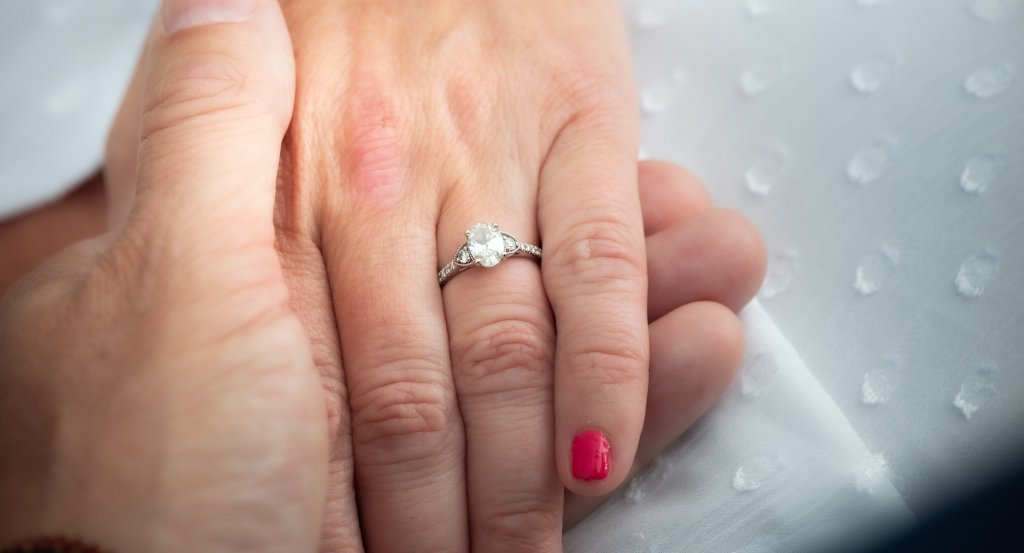
It won’t work for bigger diamonds
The larger your diamond, the larger the pavilion underneath – meaning that, as you look at the higher carat weights, you’re limiting how low you can set your diamond. Since most people consider size a priority for the diamond, this can curtail any vision you had for a particularly low set diamond.
Take the extreme example of the flush setting. It’s fine for small diamonds but, for larger diamonds, you’d need to make the metal two or three times as thick, just to accommodate the full height of the stone.
They don’t look quite as architectural
This is part truth, part opinion, so don’t take it as a set-in-stone rule that low set engagement rings are less impressive than high set engagement rings. Plus, consider the fact that, when you’re looking down on the ring from above, its height won’t matter one iota.
But, from the side, taller, loftier engagement rings tend to have a little more impact. We’re not saying all low set engagement rings look squat and disappointing by comparison, but that it’s worth going through all your options (and expectations) before you commit.
Impact on Diamond Appearance
If anything, a low setting can make a diamond look smaller than it really is, since more of the diamond is hidden from view.
Plus, reduced brilliance will inevitably make the diamond look a little less than it really is. The loss of sparkle may not be significant, but it may be an issue if you’re looking to maximize that aspect of your diamond’s appearance.
Our Expert Take
We can’t give you one objectively ‘right’ answer here. Low set and high set engagement rings are two sides of the same coin, and your preference should determine which you go for.
Both options – high or low – or too open-ended to go in and out of style, so try not to get caught up in what other people are doing. Your decision should be about what you (and your partner) think looks best, and also about any practicalities that need to be considered.
Whatever you decide, a beautiful diamond will do most of the talking for you anyway, so don’t lose sight of that most important aspect of all.
7 FAQs
- Q: What are the advantages of a low setting engagement ring?
A: Low setting engagement rings are less likely to snag on clothing and are ideal for those with active lifestyles. They also offer a sleek, modern look and tend to be more comfortable for everyday wear. - Q: Will a low setting affect a diamond’s sparkle?
A: While a low setting can slightly reduce a diamond’s exposure to light, choosing a well-cut diamond can ensure it still sparkles beautifully. The setting type and diamond shape also play a role in maximizing brilliance. - Q: Are low setting rings suitable for all diamond shapes?
A: Yes, low setting rings can accommodate most diamond shapes. However, some shapes, like round or princess cuts, may perform better in terms of light reflection and overall aesthetics in a low setting. - Q: How do I care for my low setting engagement ring?
A: Regular cleaning with mild soap and water, along with occasional check-ups with a jeweler, is recommended. Be mindful of potential buildup of debris under the diamond, which is more common in low settings. - Q: Can I pair a low setting engagement ring with any wedding band?
A: Most low setting engagement rings offer the flexibility to pair with a variety of wedding band styles. It’s best to try on different bands with your engagement ring to ensure a comfortable and visually appealing fit. - Q: Is a low setting engagement ring more durable?
A: Yes, generally, low setting rings are more durable as the diamond is less exposed to knocks and bumps. The choice of metal and design also contributes to the ring’s overall durability. - Q: Can low setting engagement rings be resized?
A: Most low setting engagement rings can be resized, depending on the band’s design and material. It’s important to consult with a jeweler to determine the feasibility and limits of resizing your specific ring.
Explore the world of low setting engagement rings with Jeweler AI – your gateway to personalized, expertly crafted rings that tell your unique love story.
FOLLOW-UP GUIDE SERIES





